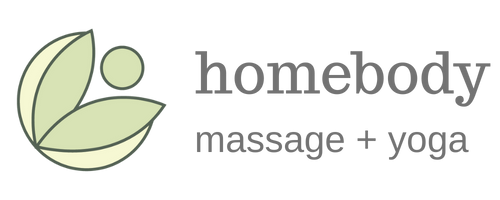Incorporating Daily Movement and Breathwork
It’s easy to roll through the days without going through a movement or breath practice. Such was the case for both Sasha and I before we embarked on our wellness training journey. We dabbled in various yoga practices, attended the occasional class, and developed our own practice. Yet a thorough practice wasn’t a daily occurrence. Then the both of us dedicated 200 hours to our initial yoga teacher training programs, roughly five to six years ago now, and we haven't looked back. Yes, there are ebbs and flows, and yes, we do miss days. Moreover, our practice doesn’t look the same every day. But we notice when we miss days; our bodies stiffen and our minds flitter. When we return to the mat and go through our practice, we noticeably feel better in mind, body, and spirit. We are able to process our thoughts, experiences, and intentions. Our bodies feel spacious, cozier, and limber. We feel more at home.
I say this because we all have a starting point. Some of us have been around yoga practices for decades and some of us have never gone through a sequence. That’s okay. Moreover, incorporating movement and breathwork doesn’t have to be as rigid as going to classes multiple times a week or spending an hour on the mat as the sun rises. That is a fantastic way to develop a routine and the community of a class is enlivening. But starting small and building momentum with a personal practice might work well too. In this blog post, I’ll pose a few questions and offer tips and tricks that have been helpful in my experience, and hopefully yours too.
What if I struggle to get to the studio? What if I struggle to get through a full class?
Start small with a personal practice at home. Some days we just don’t have the time to get to the studio, nor can we always afford to pay for class. Furthermore, there are days where my mind tells me, “ahh I’m not really feeling it”. Which tells me that, actually yes, I need to do my practice. But when? Where? I’ll start small, suggesting to myself that I’ll do 5-10 minutes and move on if I’d like. More often than not, I stay. A few minutes on the living room floor quickly becomes 20, 30, 40 minutes. When I rise and roll up my mat, I’m pleased that I stayed. When you’re really not feeling up for it, that’s typically a sign that a practice is needed. Drop in for a few minutes in the morning or before bed and see where you end up. Plus, there are plentiful youtube videos of all different time durations. Find a quick class there and discover a style or sequence you like.
What if my day is absurdly busy?
All of our responsibilities tug and pull, stretching our time thin. That being said, there are little windows here and there for little practices. Getting up to go to a meeting? Spend 60 seconds, with concentration on your breath, doing the six movements of the spine for both your torso and your neck (movements of the spine (youtube.com). Driving from place to place? I find driving to be prime meditation time, tuning into my breathing and in turn enhancing my awareness of both my posture and my surroundings. Consider the belly breath (deep belly breaths (youtube.com). Exhausted and ready to fall into bed? Roll out the mat and lay down, dropping into a brief restorative sequence before lights out. You might even just lay there and breathe. That’s fine!
Besides, yoga does not happen purely on the mat. Really, our yoga practice should spill directly into our daily lives. Meditation is done both on the yoga blocks and on the bus. The awareness and peace of mind developed therein lends itself to improved communication and emotional regulation, smoothing out interpersonal experiences with coworkers, cashiers, and family. Maybe we notice in our yoga practice that we lean our body weight heavily to one side in warrior poses, and then we begin to notice that same lean when chatting with a friend passing by, and we adjust. Or while you’re walking down the hallway and up that flight of stairs, you generate movement and power with your core and thigh muscles as worked on during your sun salutations, rather than stiffening your back and powering with lower leg muscles. Yoga permeates all facets of life.
This development of awareness and the subsequent physical, mental, and emotional adjustments happen in a nonlinear process. But by developing a flexible personal practice and finding windows of time to build a routine, we’ll improve our awareness of what is going on internally and externally. We’ll find ways to mitigate stress and enhance mental-emotional well-being all while improving our physical condition.
Lastly, maybe the most important tip: Be patient and speak kindly with yourself. This is a practice and there is no “one size fits all” option. You will miss days; life throws us off balance. In such instances, simply bring your awareness to your breath for a moment’s time, recenter as best you can, and carry on. You can only do so much in a day. But like a snowball, if you build momentum and break down those barriers to your practice time after time, your practice will grow.
